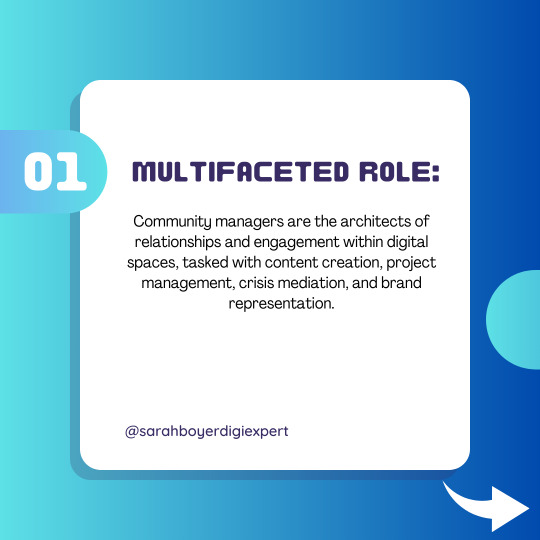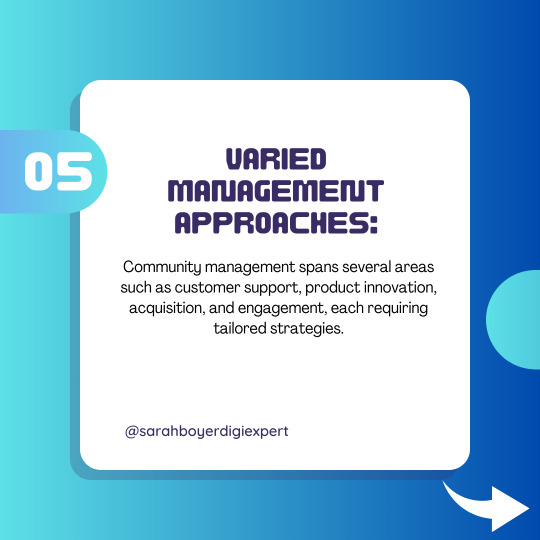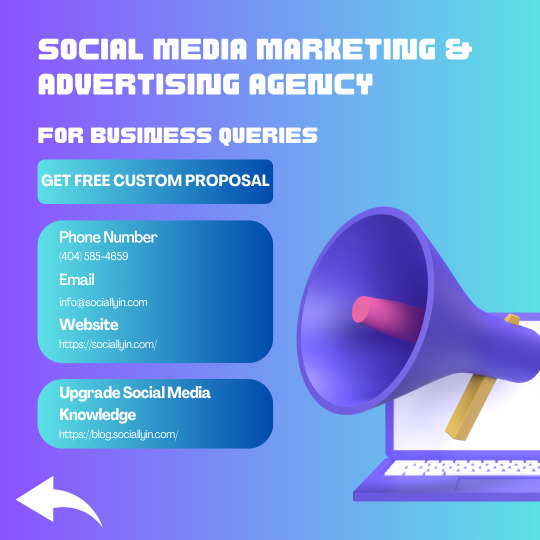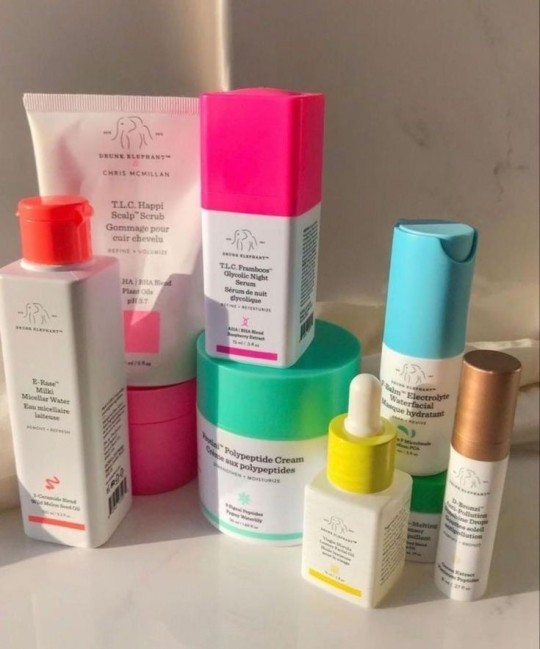#community management tools for social media
Text
Unleash your unique style and passions on Duhshowoffz, the ultimate platform for showcasing your individuality. Explore a vibrant community where self-expression takes center stage. Join us and discover a new dimension of sharing and connecting through your interests!!!
community management tools for social media
community management social media
social community app
best social media communities
online communities social media
social media community platforms
online community management platforms
#community management tools for social media#community management social media#social community app#best social media communities#online communities social media#social media community platforms#online community management platforms
1 note
·
View note
Text

In this Infographic, you should learn about Why Social Media Community Management Matters .
0 notes
Text









Exploring the essentials of community management, this brief dives into the skills and strategies needed to navigate its challenges and celebrate its successes, highlighting the role's importance in fostering engaging online spaces.
✅ Multifaceted Role
✅ Empathy is Key
✅ Crisis and Conflict Handling
✅ Engagement Strategies
✅ Varied Management Approaches
✅ Leveraging Technology for Efficiency
✅ Success Stories
➾ https://tinyurl.com/39zb73hr
0 notes
Video
youtube
Supercharge Your Presence on Threads : Unleash the Power of AI for Engag...
#youtube#AI#Threads#Threads app#Threads by Instagram#Threadsbyinstagram#Threadsbymeta#Ai website#Ai tools#Ai community#Social media#social media marketing#social media management#Instagram#Instagram growth#new social media#tutorial#artificial intelligence#ai generation#post generation
0 notes
Text
How To Become A Brand New Person ✨✨
Self Reflect:
Journal daily.
Think about past decisions and how they impacted your life.
Meditate regularly.
Create a vision board to visualize your goals.
Review your strengths and weaknesses.
Identify your core values and beliefs.
Figure out your passions and interests.
Think about your childhood dreams and aspirations.
Evaluate your current state of happiness and fulfillment.
Set Clear Goals:
Define specific career goals, like "Get promoted within two years."
Set health goals, like "Lose 20 pounds in six months."
Create financial goals such as "Save $10,000 for a vacation."
Establish personal development goals, like "Read 24 books in a year."
Set relationship goals, such as "Improve communication with my partner."
Define education goals, like "Complete a master's degree in three years."
Set travel goals, like "Visit five new countries in the next two years."
Create hobbies and interests goals, such as "Learn to play a musical instrument."
Set community or volunteer goals, like "Volunteer 100 hours this year."
Establish mindfulness or self-care goals, such as "Practice meditation daily."
Self Care:
Exercise for at least 30 minutes a day.
Follow a balanced diet with plenty of fruits and vegetables.
Prioritize getting 7-9 hours of quality sleep each night.
Practice in relaxation techniques like deep breathing or yoga.
Take regular breaks at work to avoid burnout.
Schedule "me time" for activities you enjoy.
Limit exposure to stressors and toxic people.
Practice regular skincare and grooming routines.
Seek regular medical check-ups and screenings.
Stay hydrated by drinking enough water daily.
Personal Development:
Read a book every month from various genres.
Attend workshops or seminars on topics of interest.
Learn a new language or musical instrument.
Take online courses to acquire new skills.
Set aside time for daily reflection and self improvement.
Seek a mentor in your field for guidance.
Attend conferences and networking events.
Start a side project or hobby to expand your abilities.
Practice public speaking or communication skills.
Do creative activities like painting, writing, or photography.
Create a Support System:
Build a close knit group of friends who uplift and inspire you.
Join clubs or organizations aligned with your interests.
Connect with a mentor or life coach.
Attend family gatherings to maintain bonds.
Be open and honest in your communication with loved ones.
Seek advice from trusted colleagues or supervisors.
Attend support groups for specific challenges (e.g., addiction recovery).
Cultivate online connections through social media.
Find a therapist or counselor for emotional support.
Participate in community or volunteer activities to meet like minded people.
Change Habits:
Cut back on sugary or processed foods.
Reduce screen time and increase physical activity.
Practice gratitude by keeping a daily journal.
Manage stress through mindfulness meditation.
Limit procrastination by setting specific deadlines.
Reduce negative self-talk by practicing self-compassion.
Establish a regular exercise routine.
Create a budget and stick to it.
Develop a morning and evening routine for consistency.
Overcome Fear and Self Doubt:
Face a specific fear head-on (example: public speaking).
Challenge your negative thoughts with positive affirmations.
Seek therapy to address underlying fears or traumas.
Take small, calculated risks to build confidence.
Visualize success in challenging situations.
Surround yourself with supportive and encouraging people.
Journal about your fears and doubts to gain clarity.
Celebrate your accomplishments, no matter how small.
Focus on your strengths and accomplishments.
Embrace failure as a valuable learning experience.
Embrace Change:
Relocate to a new city or country.
Switch careers or industries to pursue your passion.
Take on leadership roles in your workplace.
Volunteer for projects outside your comfort zone.
Embrace new technologies and digital tools.
Travel to unfamiliar destinations.
Start a new hobby or creative endeavor.
Change your daily routine to add variety.
Adjust your mindset to see change as an opportunity.
Seek out diverse perspectives and viewpoints.
Practice Gratitude:
Write down three things you're grateful for each day.
Express gratitude to loved ones regularly.
Create a gratitude jar and add notes of appreciation.
Reflect on the positive aspects of challenging situations.
Show gratitude by volunteering or helping others in need.
Send thank-you notes or messages to people who've helped you.
Keep a gratitude journal and review it regularly.
Share your gratitude openly during family meals or gatherings.
Focus on the present moment and appreciate the little things.
Practice gratitude even in times of adversity.
Be Patient:
Set realistic expectations for your progress.
Accept that personal growth takes time.
Focus on the journey rather than the destination.
Learn from setbacks and view them as opportunities to improve.
Celebrate small milestones along the way.
Practice self-compassion during challenging times.
Stay committed to your goals, even when progress is slow.
Keep a journal to track your personal growth.
Recognize that patience is a valuable skill in personal transformation.
Celebrate Small Wins:
Treat yourself to your favorite meal or dessert.
Reward yourself with a spa day or self-care activity.
Share your achievements with friends and loved ones.
Create a vision board to visualize your successes.
Acknowledge and congratulate yourself in a journal.
Give yourself permission to take a break and relax.
Display reminders of your accomplishments in your workspace.
Take a day off to celebrate a major milestone.
Host a small gathering to mark your achievements.
Set aside time to reflect on how far you've come.
Maintain Balance:
Set clear boundaries in your personal and work life.
Prioritize self care activities in your daily routine.
Schedule regular breaks and downtime.
Learn to say "no" when necessary to avoid overcommitment.
Evaluate your work life balance regularly.
Seek support from friends and family to avoid burnout.
Be kind to yourself and accept imperfections.
Practice mindfulness to stay present and grounded.
Revisit your priorities and adjust them as needed.
Embrace self love and self acceptance as part of your daily life.
#personal improvement#personal development#personal growth#self help#self awareness#self reflection#self improvement#level up journey#self love journey#dream girl guide#dream girl journey#dream girl tips#becoming that girl#that girl#it girl#glow up tips#glow up#clean girl#pink pilates girl#divine feminine#femininity#femme fatale#feminine journey
7K notes
·
View notes
Text
FFXIV Forum
Fuck it, let's try again.
Some time ago I created a forum that didn't stay lively for very long, unfortunately, but I don't want to give up on it as I think forums offer something that no other tool for online community can offer: an actual community that doesn't rely on everyone acting like their own PR/marketing team.
So here it is, in case anyone's interested:
What does it have to offer?
A place to meet artists and roleplayers from the FFXIV fandom, where you won't be assailed by notifications like a Discord server, that's LGBTQ-friendly and won't ask you to post all the time to remain visible (contrary to social media).
What you'll find:
RP sections for your RP threads, easier to manage than on Tumblr, and without the pressure of being seen online on Discord because you wanted to talk to your friends but aren't in the mood for RP
A place to get help to create your character or write an NPC, if you're feeling insecure and want to try your hand at writing/roleplaying
Galleries for your writing, fanarts, screenshots, irl craft, etc. where you don't have to worry about peak hours to be seen
Forums where you can gush about your own characters and get asked questions: no need to have a big following anymore!
A place where you can discuss the lore and share your meta analysis to your heart content
A place to organize your own in-game event and promote it, once again without needing to build a big enough following for it to be noticed!
Yes, there's a NSFW section (that you have to ask to get access to). Forumactif—the host—is not in favor of this, however, so if Etheirys has enough success I might consider hosting it myself (but I'm not rich so we'll start with the free alternative for now and just keep it on the low XD)
And more!
I am taking suggestions to improve it and I'll gladly help you and answer your questions if you're not familiar with forums (or this sort of forums, anyways).
For those who don't know me or find me intimidating to talk to (I know it has happened) I've been leading communities big and small for about 18 years now, and I've always put a big emphasis on fairness, communication and patience.
(Please reblog so more people can see this!)
#FFXIV#FFXIV Forum#Etheirys#FFXIV rp#final fantasy 14#final fantasy xiv#ffxiv oc#ffxiv wol#ffxiv screenshots#ffxiv gpose
456 notes
·
View notes
Text
Seven thousand more UAW members just walked off the job, expanding the strike to two more plants. Twenty-five thousand autoworkers are now on strike, and the walkout could continue to escalate if the Big Three don’t budge in negotiations.
[UAW president Shawn] Fain announced that Stellantis would be spared this time. The union had been expected to strike all three companies, but, said Region 1 director LaShawn English, three minutes before Fain was scheduled to go on Facebook Live, the UAW received frantic emails from company representatives.
[Note: Love that for the UAW. Also laughing so hard. Three minutes before the next round of strikes were annouced!!]
According to Fain, Stellantis made “significant progress” on cost-of-living allowances, the right not to cross a picket line, and the right to strike over product commitments and plant closures. “We are excited about this momentum at Stellantis and hope it continues,” Fain said...
“See You Next Week — Maybe?”
“These guys wanted to go out a long time ago,” said Cody Zaremba, a Local 602 member at the Lansing GM plant after the news broke that his plant would be joining the strike. “We’re ready. Everybody, truly, I believe, in the entire membership. They’re one with what’s going on.”
Five thousand workers at thirty-eight parts distribution centers across twenty-one states have been on strike since last Friday [September 22, 2023], along with thirteen thousand at three assembly plants in Michigan, Ohio, and Missouri who walked out on September 15. (See a map of all struck facilities here.) ...
The UAW is now calling on community supporters to organize small teams to canvass dealerships that sell and repair Big Three cars and trucks. On Tuesday, the union issued a canvassing tool kit with instructions, flyers, press releases, and talking points.
In negotiations with Ford and GM, autoworkers have clinched some important gains. Among them is an agreement by both companies to end at least one of the many tiers in current contracts, putting workers at certain parts plants back on the same wage scale as assembly workers. The top rate for Big Three assembly workers is currently around $32...
Ford was spared in last week’s escalation, because bargainers there had made further progress on gains for workers.
But today, the UAW once again called out workers at Ford and GM, putting some muscle behind its bold demands — a big wage boost, a shorter workweek, elimination of tiers, cost-of-living adjustments tied to inflation, protection from plant closures, conversion of temps to permanent employees, and the restoration of retiree health care and benefit-defined pensions to all workers.
-via Jacobin, September 29, 2023. Article continues below.
Keep Them Guessing
This year, for the first time in recent history, the union has played the three auto companies against each other with its strike strategy, departing from the union’s tradition of choosing one target company and patterning an agreement at the other two.
The stand-up strike strategy draws inspiration from an approach known as CHAOS (Create Havoc Around Our System), first deployed in 1993 by Alaska Airlines flight attendants, who announced they would be striking random flights. Although they struck only seven flights in a two-month period, Alaska had to send scabs on every plane, just in case. The unpredictability drew enormous media attention and drove management up the wall. Meanwhile the union was able to conserve its strength and minimize risk.
The companies miscalculated where the UAW was going to strike first, stockpiling engines and shipping them cross-country to the wrong facilities. Autoworkers relished the self-inflicted supply chain chaos on UAW Facebook groups and other social media platforms.
Nonstrikers’ morale on the factory floor has gotten a boost from rank and filers organizing to refuse voluntary overtime. With support both from Fain and the reform caucus Unite All Workers for Democracy (UAWD), workers have been encouraging each other to “Eight and Skate,” meaning to turn down extra work and decline to do management any favors.
Majority Public Support
A majority of Americans support the UAW strikers, and the Big Three have taken a PR hit since the strike began, according to a new survey conducted by the business intelligence firm Caliber.
“Eighty-seven percent of respondents told us they were aware of the strike,” Caliber CEO Shahar Silbershatz told the Intercept. “It’s clear the strike is not just causing commercial repercussions, but reputational repercussions as well.”
These reputational repercussions will only worsen...
"We Can Unmake It"
Fain didn't pull any punches in his speech... “That’s what’s different about working-class people. Whether we’re building cars or trucks or running parts distribution centers; whether we’re writing movies or performing TV shows... we do the heavy lifting. We do the real work. Not the CEOs, not the executives.
"And though we don’t know it, that’s what power is. We have the power. The world is of our making. The economy is of our making. This industry is of our making.
“And as we’ve shown, when we withhold our labor, we can unmake it.”
-via Jacobin, September 29, 2023
#united states#us politics#organized labor#uaw#uaw strike#united auto workers#auto workers#labor rights#uaw strong#worker rights#unions#labor unions#strike#unionize#auto industry#ford#general motors#stellantis#working class#cars#michigan#ohio#missouri#solidarity forever#hot labor summer
466 notes
·
View notes
Text

A Lifeline for DID/OSDD: The Journal that could Change your Life
Hey guys! We're incredibly excited to share something that's finally been released for a month now: the Pieces in Peace Journal. This journal isn't just another project for us-it's resource born out of necessity and a deep understanding of what it means to live with Dissociative Identity Disorder and Other Specified Dissociative Disorder. And to celebrate a month of being launched, we're hosting a GIVEAWAY where two (2) lucky winners will receive a copy of the journal along with free lifetime updates to the journal!
Why we created the Journal
Living with DID/OSDD can feel incredibly overwhelming. When I was first diagnosed, I felt so alone. I felt like a freak. I felt isolated and scared and confused. This is why I got online and found community here to begin with. The daily challenges of managing different parts of yourself, tracking moods, tracking time-loss, dealing with memory gaps, and trying to explain your experiences to others can make life feel chaotic and confusing. I've personally navigated these complexities for close to a decade now, as I was diagnosed nearly 8 years ago, and I know firsthand how difficult it can be to find the right tools and resources to help make sense of it all.
Access to care is a major issue for so many of us. Whether it's due to financial barriers, lack of knowledgeable therapists, or simply not knowing where to turn, many people with DID/OSDD struggle to find the support they need. That's why I created the Pieces in Peace Journal-to offer a comprehensive, supportive resource that can be used alongside therapy or as a standalone tool for those who don't have access to regular treatment. I consulted with DID specialists and took tools from my own extensive treatment history to create this resource to offer the community.
This journal is designed to help you navigate the multifaceted nature of DID and OSDD, providing structure and clarity amidst what can sometimes feel like chaos. It's a tool for self-discover, emotional regulation, and system collaboration-a way to bring a sense of peace and understanding to your journey.
In the Journal you will find:

Post-Regulation Tracker: Track your feelings and progress after using regulation techniques for better self-awareness.
Communication Log: Record interactions between alters to enhance system communication and understanding.

Distress Tolerance Plan: Quick steps and techniques to manage and reduce distress effectively.
System Collab Goals: Set and track collaborative goals within your system for cohesive growth and progress.
These sections, along with MANY others (over 100 pages!!), are designed to support you in understanding and managing your system. They're tools to help you keep track of your progress, set goals, and ensure that everyone in your system is working together toward common goals.
Why the Journal Matters:

This journal isn't just a collection of pages-it's a lifeline for those who feel lost in the complexities of DID and OSDD. Each section is thoughtfully crafted to address the unique challenges that come with living with a dissociative disorder.
How to Enter the Giveaway:

To celebrate the one month launch of the Pieces in Peace Journal, we're hosting a giveaway! Here's how you can enter:
Check out the Giveaway post on IG for ALL the details on entering. Reblogging here counts as an extra entry!
This giveaway is open internationally and ends on August 20, 2024

Thank you so much to everyone who has supported us over the many years we've been on Social Media. We used to have a tumblr under the name FrgmntdPsyche that we deleted many years ago, however we are back now and plan on staying. Thank you to all of you who have had interest in the Pieces in Peace Journal and have supported us in it's creation and release! We truly appreciate every one of you and hope this journal becomes a valuable companion on your journey.

Stay tuned as we continue to work on making more resources for people across many spectrums (CPTSD, Chronic Illness/Pain, ADHD, and more!), host more giveaways, and help as best we can to give back to an incredible community who has saved our life on more than one occasion. Join our Discord for even more support and a great little cozy community of amazing people!

49 notes
·
View notes
Text
All power to the soviets! Ok, now that the liberals have ran away: I am interested in how marxist-leninist theory can be applied in the critique of the internet, and what ideas have been brought up by communists on what a collectivized web could be like. We all know the privatized, globalized internet is a tool of capital, social media working as a content factory in which workers work for free and generate advertisement revenue for the enterprises like Google, Facebook, Youtube, Twitter and the like. Now, it is also evident that web connection is a useful tool for communicating information, managing economical transaction and sharing knowledge. But under capitalism, any potential communal good that could come from the web is hampered by design; access to the internet is expensive and thus only easy for those that benefit from the spoils of imperialism (living in the imperial core); web hosting is privatized, social media is built as a factory of self-propaganda, the internet works esentially as a highway for globalized commerce and bourgeois exploitation in digital format. This is why I wonder how this could be dismantled in a communist regime (obviously it must start with state control and popular ownership of the physical means of digital production, but beyond that) and what shape a communist web would take, or if such a thing is possible at all. So if anyone knows any essays or books on the subject, please let me know, and thank you for your time.
@death-to-usa @bogleech @brendanicus @komsomolka @elbiotipo @hurricanewindattack @txttletale @papasmoke @transingthebourgeoisie @trans-girl-nausicaa @genderyomi @nyancrimew @communist-ojou-sama @communistkenobi @marxism-transgenderism @chrisdornerfanclub @commiemania @transmutationisms @gaylenin @lambdadelta-communism @autolenaphilia @little-bolshevik @apas-95 @kira-serialfaggot @thottacelli @zvaigzdelasas @daughter-of-sapph0 @decolonize-the-left @strawberry-crocodile @estrogenesis-evangelion
(communists of the entire website, unite!)
#communism#communist theory#marxism#marxism leninism#socialism#internet#cyberspace#capitalism#imperialism
69 notes
·
View notes
Note
Hello!
May I ask you a question?
I'm currently researching ways to respectfully portray nonspeaking characters in media.
I'm planning on writing a book at some point and one of the characters is nonspeaking.
I wish to portray them without promoting harmful stereotypes, so I've decided to ask people who are actually affected about the topic.
What would you say are things that should be avoided when portraying nonspeaking individuals?
And, a little more specific to the setting I'm writing, what AAC would be OK for a character to use in a setting without technology?
As I currently have it, most of the characters in the nonspeaking individual's social circle do know sign language. However, one of them doesn't at the beginning of the story. (They learn later.)
Would it be OK to use Morse code for communication here? Or writing in a notebook?
You are, of course, in no way obligated to answer my questions. Please don't feel pressured to do so.
Thank you for your time!
Hello! Thank you for asking. So, I’m a word with no technology then a notepad and sign language can be a very good tool. Not many people know Morse code, so unless it’s something you build into your story line and have as a neutral thing that most people know, then it can be confusing on why they know Morse code in the first place. If that makes sense.
Notepads are very useful, and I think that’s a great idea! I’d love to see how you build that into their storyline. Is the notepad old? Does the notepad have a story itself? I’d love to see a storyline for how they got the notepad, and how they managed to keep it and tend to it throughout their journey. As well as how they keep writing utensils. Such as pens and pencils, cause those run out eventually. Do they carry around a large supply of pencils and pens?
I’d love to see how you portray the nonspeaking character. How they became nonspeaking, if it’s been since birth or an injury or just something else. I’d love to see the character be diverse. Like a POC, further disabled, has other mental health conditions, etc etc. I’d love for the nonspeaking character not to be the comedian of the group, and actually be an essential part of the story. I’d also love to see how you portray the potential ableism they face, and how those around them react to finding out how and why they can’t speak.
I hope this helps! You’re free to ask further questions! Have a lovely day anon and I hope this gives you something.
26 notes
·
View notes
Text
My dad just messaged me going "seeing all this 'Save OFMD' stuff made me realise some things never change" and attached a load of pictures he'd dug up from fifteen years ago of me in my 'Save Ianto Jones' fan campaign era.
As much as it made me laugh, it also made me think about something that I've not talked about before: the fact that this is what introduced me to campaigning.




I was a very lost queer (undiagnosed autistic) kid, bullied and lonely and keenly aware that there were a lot of bad things happening in the world, but I had no idea how to begin to even try to change things, or even any awareness that there was anything I could do to change anything.
And then my favourite show killed off my favourite character, and I suddenly accidentally found myself swept up in the mobilisation (without even realising that that was what was happening) of the fan community around me. It's where I learned about the idea of campaigning as, y'know, a thing that I could do. It introduced me to the concept that I could actively try and do things to make a change I wanted to see in the world.
And now that's my actual literal real world adult job. This is what I do in my 9-to-5. Some of the skills I learned and developed at seventeen (and the lessons from the fuck-ups - oh boy there were many of those because I was seventeen) trying to get the BBC to un-dead my favourite bisexual welshman are skills that I now use every day to actually create change (such as writing persuasive emails to influence a specific target).
And I've also used them outside of the 9-5 in the smaller grassroots campaigns I've been involved with. For example, the skills I learned from a fan campaign when I was a teenager helped me play a small part in stopping the deportation of young autistic man, and potentially saved his life.
There's a HUGE amount of crossover/symbiosis between fan campaigns and 'real world' campaigning. A huge number of people involved in these fan campaigns are already involved in organising (or at the very least supporting/donating) for 'real world' issues. And, if they're not, then a fan campaign may well be their introduction to campaigning - a 'wow ok so I can actually do this' moment that inspires them to start pushing for change on other issues too.
It's fantastic if someone goes 'hey, I managed to call Netflix about picking up Our Flag Means Death, which has made me realise maybe I can also cope with picking up the phone to call my political representatives about [insert other issue here]' - and if the strategies they put in place to help them do the Netflix phone call also help them do the political phone calls as well, then that's absolutely brilliant.
The same with getting experience/confidence writing emails, or learning how to create and push a hashtag on social media, or realising the power of taking mass actions (like signing a petition). It even goes so far as inspiring people to follow up a fan campaign donation with an additional donation to a good cause, and helping direct them to some good charities/initiatives to donate to (because sometimes knowing which are the right ones to send your money too is very hard).
These are all skills and experiences that can help build both confidence and understanding of how to get involved with campaigning for change, and these are absolutely transferrable to an infinite number of causes.
It's about people feeling empowered to take action: feeling like they can do it, that it's tangible to them as something they can do, and giving them the tools to do it. The endgame in real world advocacy and campaigning is getting stuff done: petitions signed, phone calls made, emails sent, donations collected, rallies attended.
And no one (outside of the internet moral purity police) cares if your journey getting there started with a fan campaign.
#erin waffles#save ofmd#save our flag means death#renew ofmd#renew our flag means death#adopt our crew#ianto jones#torchwood#save ianto jones#advocacy#campaigning#look at me in these pictures i'm a fetus
35 notes
·
View notes
Text
How I Deal with Tough Days When My Brain Won't Let Me Work
We all have those days where productivity feels impossible. It’s like no matter what we do, we just can’t seem to get started. I’ve come to realize that, for me, these days aren’t just about laziness or lack of motivation—it’s more complex. When I procrastinate, it’s often my creative brain, or what I like to call my “inner child,” throwing a tantrum.
Step 1: Understanding the Procrastination
The first thing I do is pause and try to understand what I’m running away from. Is it the overwhelming amount of work? In that case, I break it down into smaller, manageable bits. When the material feels boring, I add some fun—by creating colorful and funny interpretations of definitions or concepts. I turn words into weird characters, almost like a cartoon in my mind. Sometimes, I’ll turn it into a game, like seeing how many questions I can get right, or even trying new study techniques like rewriting a sentence or reading it out loud.
I find that when I’m bored, it’s a perfect opportunity to experiment. I might try drawing funny sketches of the material or use quirky interpretations to make it more interesting. The key is that I have to figure out what’s causing the procrastination—is it fear, perfectionism, or just the sheer volume of work?
Step 2: Naming My Inner Child
Once I understand what’s happening, I like to give my inner child a friendly name. This helps me communicate with it when things get tough. Every time I mess something up and feel like quitting, I know that it’s just my inner child reacting to the idea of perfectionism. Naming it makes it less scary, and I feel more in control of the situation.
A perfect example would be the time I noticed that my inner child shows up in my skincare routine, but not because I’m lazy—it's because I feel unmotivated when I don’t have enough of those colorful, trendy products, like the ones all over TikTok. You know, the Drunk Elephant skincare, with its fun packaging that every influencer seems to have. It taps into the same idea as “Sephora kids,” where even as adults, we’re drawn to overconsumption of things we don’t actually need, just because they’re colorful or trendy or aesthetically pleasing.
But I’ve realized that I don’t need fancy, colorful products to wash my face before bed. My inner child might crave those items, but recognizing that helps me let go of the unnecessary pressure to follow trends. I focus on the routine itself, rather than what’s missing from my shelf.
Step 3: Clearing the Distractions
Next, I clear my desk. Anything that’s not a school supply or a tool I need for work can be a distraction, especially if it’s colorful or unrelated to my task. I set a 5-minute timer and start working, just to show my inner child that it’s really not that scary. Once the timer’s up, I double it, taking short breathers in between. I repeat this until I feel like I’ve done enough for the day.
Step 4: Knowing When Enough Is Enough
After a certain point, I trust my own judgment. I ask myself honestly, “Is this enough for today?” If I feel like I’ve given it my best shot, I let go of the need to do more. I accept that some days will be harder than others, and that’s okay. The important thing is that I’m not fighting my inner child, but working with it.
It’s a simple process, but it’s effective. Instead of battling myself, I’ve learned to communicate with that part of me that gets overwhelmed, bored, or perfectionistic. By understanding and breaking things down, I can get through even the toughest days without feeling like I need to drop everything.

P.S.: I’ve struggled to stay productive most of my life, and a part of that was because I didn’t grow up in one of those aesthetically pleasing, western-style homes you always see on social media. I live in the Balkans, and my bedroom looked nothing like that. It wasn’t perfectly curated or full of trendy decor, but over time, I grew to love my culture and my surroundings. Even though I wasn’t the richest or living the most "aesthetic" lifestyle, I’ve learned that what I have is enough, and it doesn’t define my ability to be productive or happy.


#productivity#productive#100 days of productivity#girlblogging#discipline#aesthetic#femininity#self care#self development#self help#self improvement#street style#bedroom#balkan#study blog#study motivation#student#studyspo#study aesthetic#study tips#study time#study#skincare#girl blogger#david goggins#psychology#cognitive#deep thoughts#ranting#study hacks
17 notes
·
View notes
Text
🚨 Heads-up to small business owners 🚨
If someone slides into your DM offering a quick fix solution to boost your sales, they are nearly 100% for sure attempting to grab you by your ankles and shake you for as much cash as they can get out of you.
Instead, P L E A S E do your own reading of marketing blogs, test stuff out and see what sticks for YOUR shop and YOUR audience!
Community building is a very valid way to get started. Victoria Tran (from Among Us) has great insights on how to build an engaged and interested community.
You can also look at resource guides posted by social media management tools, such as Hubspot or Sprout Social. Pinterest's trend reports are a great way to stay in the know about emerging and predicted trends.
More than anything: look at what your peers are doing. See what works, see what doesn't, and TEST TEST TEST. Some things will flop, other things will stick. The algorithm is doing whatever, so A/B test and find what works for you.
And when one of those marketing "quick fix" con men moseys into your inbox, be sure to laugh. Laugh loudly. Point and then laugh even more. And then chase. them. out. <3
79 notes
·
View notes
Text
ppl don't understand moderation at scale and it shows
a lot of ppl on this website don't seem to understand tumblr is a pretty big website and big websites are hard to moderate.
like yeah it's obvious to you when there's a bad post that violates AUP or there's a perfectly good post that got incorrectly flagged. like duh. just ban terfs and don't ban transwomen.
but how many posts do you see a day, a thousand or so?
well it's a little harder when there are 13 million posts published per day, approximately 3-5% of them require moderation* (4% = 520k posts), and your automated tooling is anything less than 99.5% accurate (i.e. more than 1 misclassification every 200 posts). that accuracy would produce 2600 posts per day that require human review. if there are 4 human reviewers working 8h/day doing nothing but moderation, they'd have a budget of 44 seconds** to spend on reviewing a given post. and that's likely an underestimate of the workload***.
there are gonna be some mistakes. if you make your automated stuff less trigger happy, more bad things like terf shit falls through the cracks. if you make it more trigger happy, marginalized people start getting flagged for calling themselves faggots or posting boygirltits. if you rely less on automation, then you need humans; if you use humans, they cost a lot more, they're way slower, you're exposing more people to traumatic shit every day, and they're still gonna make mistakes.
to be clear: i think it's true that on aggregate, marginalized people are disproportionately affected by moderation mistakes. but that's not a tumblr-specific thing, and i don't think it's reasonable to expect tumblr, a 200-person company with 300 million monthly active users, to somehow solve a problem that none of twitter/facebook/reddit/youtube have managed to solve with literally thousands of engineers. should they do better? yes. absolutely. but that's not my point.
my point is: when you see the mistakes, i'm sitting here begging and pleading for you to consider it might be due to the logistical reality of social media moderation at scale rather than conspiracy or malice.
thanks 4 coming 2 my ted talk. footnotes under the cut.
*AFAIK Tumblr doesn't publicly report this statistic, so this is an informed under-guesstimate. On Reddit, 6% of all content was reported/flagged in 2021. I assume Tumblr and Reddit have similar enough content profiles for me to say "ehhh 3% lower bound, probably."
**Calculated by (60 / (P / (M * W * 60))) where P is number of posts to review, M is number of moderators, and W is hours worked per moderator per day. 60 / (2600 / (4 * 8 * 60)) ≈ 44.
***This is a reductive picture for the purpose of demonstrating scale. In real life, the calculus for how long can a moderator spend on a given post is more complicated because of things like prioritization for specific kinds of AUP violations (eg CSAM is higher priority than porn), classification accuracy that isn't uniform across categories (eg hit rate for gore is probably different from porn or hate speech), regulatory requirements (like mandatory reporting for CSAM and government takedown requests), different pipelines for user reports versus tool-based reports, yadda yadda. My goal is to show that even the underestimate is quite burdensome.
PS: I don't work for tumblr and I never have. I just work at a place that does things at scale and faces similar issues and I'm very passionate about online communities.
66 notes
·
View notes
Note
hi! about the "learn how it works before you start making assumptions" about the bluesky post and its networks; what assumptions should we be looking out for? that its not twitter and not everyone is going to be connected like on there? your description of federated networks is understandable, but the default domain it seems to have at signup is bluesky's. I feel like most people would be using this, and only people looking for a certain thing and knowingly leaving that "sphere" will know that theyre isolating to a different community.
I'm new to this too and theres very very minimal, well explained things about it online, and youre the only person I've come across who seems to know anything, so if you have more advice to share I'd appreciate it!
as much as I would like to answer this as an authority and really contribute to the nascent understanding of federated instances as an alternative to current social media platforms, the fact of the matter is that im not. i have a basic understanding of the way in which they work and how to use them, and I dont think im the best source of information. this being the case, since i did bring it up and i did get an ask, i'll try to explain the best i can.
the "fediverse" (dont mind the silly name, we know its silly) might best be explained with the similarities to email. Misskey, Mastodon, and others marketing themselves as federated instance platforms are basically like if you took your email account and stapled twitter to it: Misskey/Mastodon are not platforms themselves, so much as they are frameworks for web servers that connect to one another independently and are run by individuals. These frameworks are usually open source, have different alternative forks that offer different additional features/ui elements, and ultimately all connect to one another regardless. but they are not "platforms" like tumblr or twitter or facebook. anyone can make their own federated instance, and what that instance looks like depends on what framework they used to set it up.
Bluesky and Threads are different. Bluesky differs in that it is run on a private protocol-- it runs differently to the protocols used by the aforementioned open source alternatives and currently cannot connect with them. It's still in beta and its too early to call how it will operate. Threads, like Bluesky, is also a private protocol. At current, it merges your information with other Facebook/Meta products (facebook, instagram, etc). Supposedly, these will eventually be able to communicate with the Fediverse at large, but you should keep a great amount of suspicion with them, as both are run by billionaires. Bluesky is the project of the former head of twitter, and Threads obviously belongs to Zuckerburg and Facebook.
If you head about "x platform is homophobic/racist" in reference to the earlier federated instance frameworks, understand this very crucial thing about Mastodon/Misskey/etc:
They are not websites. They do not have established moderation policies and staff dedicated to managing who posts what.
as stated, Masto/Misskey are just server frameworks. Each federated instance using those frameworks is run by individuals on their own private web servers that they either operate themselves or rent out from a company. the largest Misskey instance, Misskey.io, is currently under fire for having homophobic moderation practices. This does not mean that every instance of Misskey is moderated with homophobia in mind, and homophobic moderation tools are not built into the code of Misskey.
As the old guard of web 2.0 crumbles, the internet is changing again. whether we fall back into the ad-friendly hellhole of yesteryear or we enter a new phase of the internet's wild west depends on platform migration patterns and whether or not people develop some pretty basic web and internet literacy that's been lost over the last 20 years as the internet corporatized and users had to learn less and less about how the websites they used work. my explanation here probably has incorrect information and holes in it, but that is because i, myself, do not fully understand the total extent to which the fediverse and federated protocols operate; i, too, am a layman.
that being said, i hope this was helpful to anyone trying to figure this stuff out. i've already carved my own space on a small, invite-only instance with friends, but i've got no plans to move shop until this place really does burn down to the ground. hope that helps. good luck!
#asktag#Anonymous#long post#fediverse#misskey#bluesky#this is why i said someone who can actually explain this and has an audience needs to get ahead of the curve#i dont think federated instances are super complicated if you have some webdev knowledge#but this new generation of people who grew up with the corporate internet might not have the first clue about operating it#in the end#all we can do is learn and adapt#if someone wants to poke a dozen holes in this post and better explain it#go for it
61 notes
·
View notes
Text
Navigating the Path to Getting Your Work Out There
As a writer, getting your work out there can feel like an uphill battle. Whether you're just starting or have been at it for a while, it’s important to understand the different avenues available to you—and the challenges that come with them. In this post, I’ll explore freelancing, the role of social media, and using platforms like Submittable, all while emphasizing the importance of being cautious and strategic.
Freelancing: The Long Road to Financial Stability
Freelancing can be an exciting prospect for writers, offering the flexibility to work on your terms and the potential to earn money doing what you love. However, it's essential to recognize that building a steady income from freelancing is a long-term endeavor. Many writers start with small gigs and gradually build up their portfolios, but this process can take months or even years before it becomes a reliable source of income.
That’s why I recommend having a backup plan—a stable job or another source of income—while you’re getting your freelance career off the ground. This approach allows you to pursue your passion without the added stress of financial instability. Remember, patience is key, and the time you invest in freelancing will pay off in the long run.
The Power and Pitfalls of Social Media
Social media is an invaluable tool for writers. Platforms like Instagram, Twitter, and Tumblr allow you to build an audience, connect with other writers, and share your work with a broader audience. However, while social media can be a great way to showcase your talent, it's important to be mindful of what you post.
Many publishers and literary magazines have strict guidelines about what they consider 'previously published.' If you post an entire poem or story online, some may no longer accept it for publication. To avoid this, consider sharing snippets, teasers, or even behind-the-scenes insights into your writing process instead of full pieces. This way, you can still engage with your audience without jeopardizing your chances of getting published.
Discovering Opportunities with Submittable
If you’re looking to submit your work to contests, magazines, or other publications, Submittable is a great resource. This platform helps you discover places where you can submit your work, making the process more manageable and organized. However, with so many opportunities available, it’s crucial to be cautious.
Before submitting your work, do your research on the publication or contest. Look out for red flags like high submission fees, vague or unclear information about the organization, and unrealistic promises (e.g., “guaranteed publication” or “instant success”). It’s better to take a little extra time to ensure you’re submitting to a reputable place than to rush and risk getting scammed.
Final Tips
The journey to getting your work out there is often long and filled with rejections, but persistence is key. Stay resilient and keep honing your craft. Engaging with writing communities can also be incredibly helpful—connecting with fellow writers, sharing experiences, and getting advice can make the process less daunting.
Remember, getting your work out there takes time, strategy, and a bit of caution. Protect your creative work and stay focused on your goals, and you’ll be well on your way to finding success in your writing journey.
9 notes
·
View notes